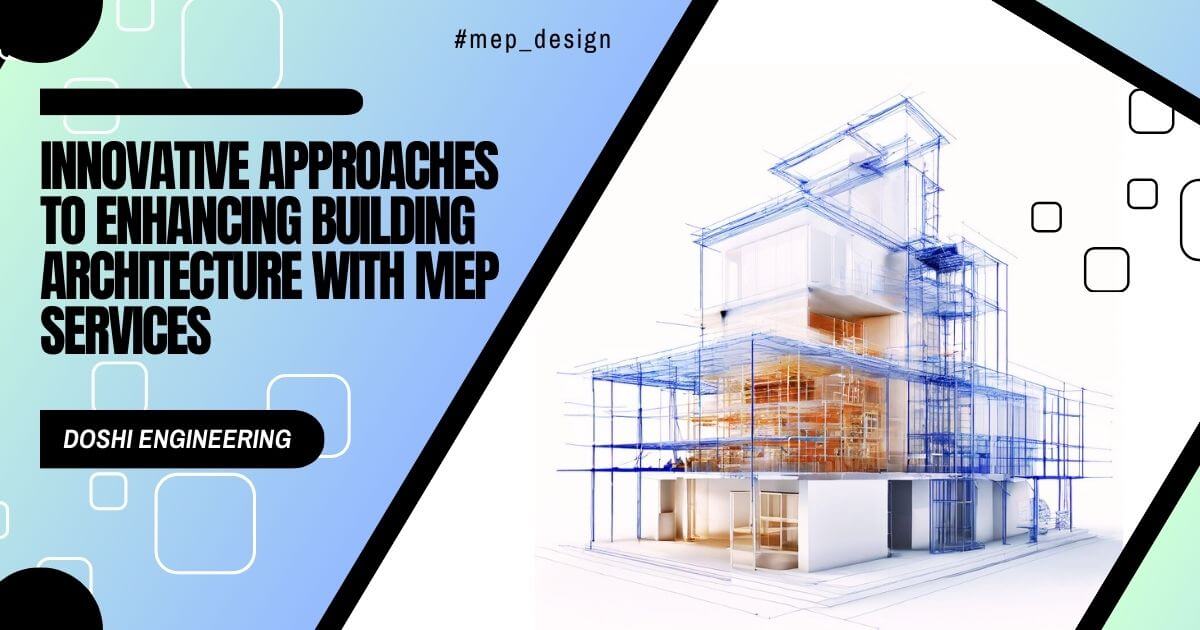Maximizing Building Efficiency through Integrated MEP Design
In order to maximize building efficiency, it is crucial to implement an integrated MEP (Mechanical, Electrical, Plumbing) design approach. By considering all three aspects of MEP systems during the design phase, it becomes possible to optimize the performance and functionality of the building.
Integrated MEP design allows for the seamless coordination and integration of various building systems, resulting in improved energy efficiency, reduced operational costs, and enhanced occupant comfort. By prioritizing the efficient use of resources and employing innovative design solutions, buildings can achieve higher levels of sustainability and environmental performance.
Through the integration of MEP systems, architects and engineers can create adaptable building spaces that can easily accommodate future changes and advancements. This flexibility ensures that the building remains functional and efficient throughout its lifespan, reducing the need for costly renovations or modifications.
With the expertise of our team at Doshi Engineering, we strive to maximize building efficiency through our integrated MEP design approach. By considering all aspects of MEP systems, we can deliver practical and cost-effective solutions that meet our clients’ needs while adhering to the highest standards of excellence and code requirements.
Balancing Aesthetics and Functionality with MEP Solutions
When it comes to building architecture, it is essential to strike a balance between aesthetics and functionality. MEP solutions play a crucial role in achieving this balance by integrating seamlessly into the overall design while ensuring optimal performance and functionality.
At Doshi Engineering, we understand the importance of harmonizing MEP systems with the architectural vision of a building. Our team works closely with architects and designers to develop MEP solutions that enhance the aesthetic appeal of the space while delivering efficient and reliable systems.
Through careful coordination and collaboration, we can integrate MEP systems in a way that complements the overall architectural design. This includes concealing MEP components, optimizing space utilization, and ensuring that the systems do not compromise the visual integrity of the building.
By striking the right balance between aesthetics and functionality, our MEP solutions contribute to creating visually appealing buildings that are also highly functional and efficient. We believe that every building should be a masterpiece in both design and performance.
Harnessing Sustainable Practices in MEP Systems for Architectural Enhancement
In today’s world, sustainability has become a key consideration in building design. MEP systems offer an excellent opportunity to harness sustainable practices and enhance the architectural integrity of a building.
At Doshi Engineering, we prioritize sustainability in our MEP design approach. By incorporating energy-efficient technologies, renewable energy sources, and water conservation strategies, we can create buildings that minimize their environmental footprint and contribute to a greener future.
Through the use of sustainable MEP systems, buildings can achieve higher levels of energy efficiency, reduce greenhouse gas emissions, and lower operating costs. These systems can include energy-efficient HVAC (Heating, Ventilation, and Air Conditioning) solutions, smart lighting systems, water-efficient plumbing fixtures, and advanced building automation systems.
By harnessing sustainable practices in MEP systems, architects and engineers can create buildings that not only meet the highest standards of environmental performance but also provide a healthy and comfortable environment for occupants. This integration of sustainability and architectural enhancement contributes to the overall success and longevity of the building.
Optimizing Building Performance with Integrated MEP Services
Optimizing building performance is a critical goal for architects and engineers. Integrated MEP services play a vital role in achieving this objective by ensuring the efficient operation and functionality of building systems.
At Doshi Engineering, we understand the importance of optimizing building performance through integrated MEP services. By considering all aspects of MEP systems, including HVAC, electrical, plumbing, sprinkler, and fire protection design, we can create systems that work together seamlessly to enhance overall building performance.
Through our expertise and experience, we can design MEP systems that are tailored to meet the unique needs of each project. This includes selecting energy-efficient equipment, implementing advanced control systems, and integrating cutting-edge technologies to maximize the performance of the building.
By optimizing building performance with integrated MEP services, architects and engineers can ensure that buildings operate at their highest potential, providing a comfortable and productive environment for occupants while minimizing energy consumption and operational costs.
Achieving Seamless Coordination between MEP and Architectural Elements
Achieving seamless coordination between MEP (Mechanical, Electrical, Plumbing) systems and architectural elements is essential to ensure the successful implementation of a building design. This coordination involves integrating MEP systems into the architectural framework in a way that enhances both the functionality and aesthetics of the space.
At Doshi Engineering, we specialize in achieving seamless coordination between MEP and architectural elements. Through close collaboration with architects and designers, we ensure that MEP systems are integrated into the building design from the initial stages, allowing for a cohesive and harmonious final result.
Seamless coordination involves careful planning and consideration of MEP system requirements, space allocation, and equipment placement. By working in tandem with architectural elements, such as structural components and interior finishes, we can minimize visual disruptions and optimize space utilization.
By achieving seamless coordination between MEP and architectural elements, we can create buildings that not only meet functional requirements but also provide a visually appealing and cohesive environment. This integration contributes to the overall success of the project and enhances the experience of building occupants.

